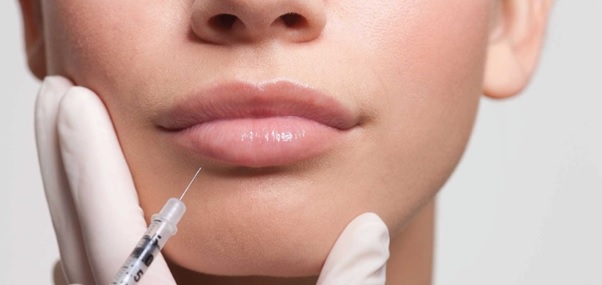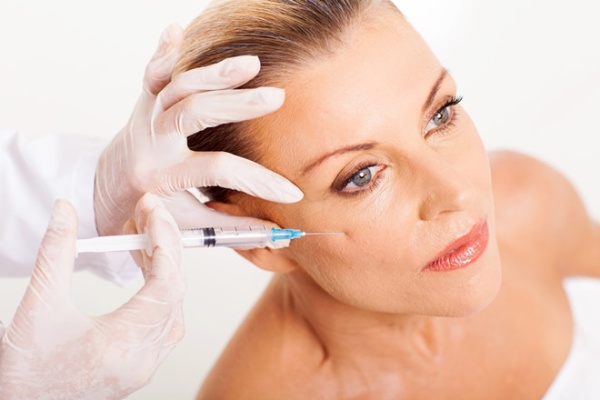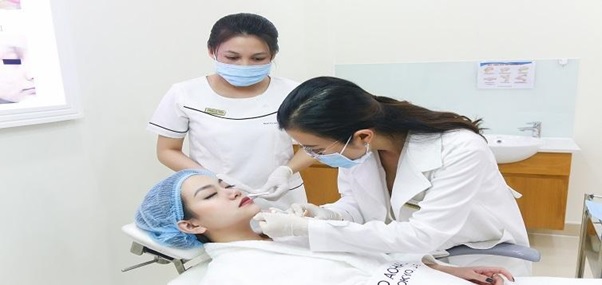- ROHTO AOHAL CLINIC: RECRUITMENT NEWS JANUARY 2024 16.01.2024
- ROHTO AOHAL CLINIC: RECRUITMENT NEWS OCTOBER 2023 19.10.2023
- ROHTO AOHAL CLINIC ALONGSIDE THE CAMPAIGN “HAVE YOU PROFHILO-ED”? 30.01.2024
- SOFWAVE, THE LEADING SKIN REJUVENATION TECHNOLOGY AWAKENING YOUTHFULNESS 04.10.2023
- 18% OFF ON ALL INTENSIVE SKIN CARE PRODUCTS UNTIL MARCH 17th, 2024! 11.03.2024
10+ SURPRISINGLY WAY OF MELASMA TREATMENT AND LIMIT RECURRENCE
|
Table of Contents 1. What is melasma? Who is often susceptible to melasma?
2. Causes of melasma formation on the skin 3. Surprisingly effective way to treat melasma at home
4. The safest high-tech treatment for melasma to limit recurrence
5. Prestigious melasma treatment beauty salon in Hanoi - Rohto Aohal Clinic |
Melasma is a fairly common skin disease today. In particular, brown patches will form on the skin, which can be on the face, neck, and hands. Although melasma is not a serious disease, it affects appearance and psychology, making people with melasma lack confidence when communicating. So what melasma treatment methods are available and how effective they are? Let's find out through the article below.
1. What is melasma? Who is often susceptible to melasma?
1.1. Find out what melasma is?
Melasma is a skin hyperpigmentation disorder that forms dark brown or black patches or spots on the skin. Melasma often appears in areas such as the forehead, cheeks, nose, around the lips, and in some cases there is also melasma on the neck and arms.
Melasma has many different manifestations, depending on the size, color, and depth of the melasma. Based on the above factors, melasma is classified into 3 types: shallow melasma, deep melasma and mixed melasma. Melasma spots can darken or fade over time. Although it does not affect health much, dark melasma causes a loss of aesthetic beauty, causing many people to lose confidence in their appearance and hesitate to communicate.
1.2. Why do we have melasma?
When the body experiences endocrine disorders, the pigment Melanin is produced excessively, leading to the appearance of dark spots on the skin. Melasma is often severe in the summer and lighter in the winter.
1.3. Time of melasma appearing
Melasma can appear when people turn 20 years old, especially in women of reproductive age. Some people get melasma when their bodies have hormonal changes such as pregnancy, childbirth, premenopause, and menopause after age 50.
1.4. Subjects prone to melasma formation
- Melasma is common in women
According to statistics from the American Dermatology Association (AAD), 90% of people with melasma are women, with only 10% of men having melasma. Melasma is common in women aged 20 - 50, especially pregnant women and after giving birth. Premenopausal and postmenopausal women are also susceptible to skin conditions that cause melasma to appear unsightly. In addition, melasma is also related to a number of other factors such as skin color, race, and geography. Asian women and women of color have a higher rate of melasma than white women.
- People who are often exposed to sunlight
When exposed to frequent sunlight, skin cells will react according to a natural mechanism to protect the skin by producing a lot of melanin pigment to create a "barrier" to prevent UV rays from harming the skin. other cells. The more melanin produced, the more severe the melasma becomes.
- People who abuse skin whitening cosmetics
Skin whitening creams, creams containing a lot of bleaching agents, corticosteroids, etc. can easily corrode the skin, making it susceptible to sunburn and increasing the risk of melasma many times higher.
- People with poor nutrition
Included in the list of people susceptible to melasma are people with poor nutrition. When the body lacks nutrients, skin cells will not be fully nourished. A weakened natural immune system leads to a reduced ability to resist external invaders, increasing the risk of melasma many times over.
2. Causes of melasma formation on the skin
Causes of endogenous melasma:
- Genetics: Melasma can be caused by genes. If there is a family history of melasma, the risk of children and grandchildren also being more susceptible to melasma. Most twins are equally likely to have melasma. Dark-skinned people are more susceptible to melasma than white people.
- Gender: Women are 9 times more likely to have melasma than men.
- Are taking birth control pills.
- People with hormonal disorders or hypothyroidism.
- Pregnant women: Melasma is a common condition that occurs in 15% - 50% of pregnant women. Increased levels of estrogen, progesterone and melanocyte-stimulating hormones during pregnancy can cause melasma.
- Effects of drugs: Some antibiotics, non-steroidal anti-inflammatory drugs (NSAIDs), diuretics, retinoids, hypoglycemic drugs, anticonvulsants, psychotic drugs, etc. also have factors that cause melasma.
- Effects of skin aging.
Causes of exogenous melasma:
- Cosmetics: Using incorrect cosmetics and skin care products can cause melasma on the skin.
- Sunlight: UV ultraviolet rays from the sun affect pigment control cells (melanocytes) causing melasma.
- Light from LED screens such as TVs, mobile phones, computers,...
- Inappropriate skin care regimen makes the skin weak, thin and susceptible to skin damage.
3. Surprisingly effective way to treat melasma at home
3.1. Use creams and topical medications
The types of creams and lotions used to treat melasma commonly used today include some of the types below.
- Hydroquinone
Hydroquinone comes in the form of a lotion or gel that can be applied directly to discolored patches of skin, helping them lighten their color. This is the melasma treatment cream that is often prescribed first by doctors.
- Corticosteroids and tretinoin
Corticosteroids and tretinoin are both prepared in cream, gel or rose water form, and work to lighten the color of melasma patches.
- Combination cream
In some cases, dermatologists may prescribe combination melasma creams that contain hydroquinone, corticosteroids, and tretinoin in one product.
- Skin medicines
Common topical medications to treat melasma are Tranexamic Acid, Azelaic Acid, Tretinoin,...
3.2. Use oral anti-pigmentation medications to treat melasma from the inside
Oral medications that treat melasma from the inside often contain ingredients such as vitamins B, C, E that participate in the metabolic process, helping the skin become brighter and more radiant. In addition, some melasma treatment medications also contain active ingredients that lighten dark spots and increase skin brightness such as Ascorbic Acid, L-Cysteine, Calcium Pantothenate.
3.3. Use folk methods with natural ingredients
Soybean extract reduces the process of converting melanocytes into skin cells, helps repel melasma, and protects the skin from environmental damage.
The group of Alpha Hydroxy Acids derived from plants (citrus fruits, grapes, sugarcane), royal jelly,... also help regulate Melanin pigment, brighten skin and reduce wrinkles.
Drinking tomato, cucumber, and lemon juice provides extremely high levels of vitamins A, B, C, E, breaks down the structure of melanin, and promotes the body to eliminate them through excretion. and sweat glands. Thanks to that, the melasma will fade and disappear.
4. The safest high-tech treatment for melasma to limit recurrence
4.1. BBL Light
BBL broad-spectrum light pulses mainly affect the epidermis, gently breaking down melanin pigment molecules that cause melasma into extremely small molecules. Then let the body eliminate them by itself according to its natural purification mechanism.
4.2. Laser Q-Switched
Q-Switched laser is the leading technology used in treating melasma. Doctors will use a 562 nm wavelength Q-Switched Laser to impact the epidermis. When exposed to laser, the pigment molecules that cause dark spots will be broken into extremely small molecules and eliminated according to the natural purification mechanism. In addition to treating melasma, Q-Switched Laser also stimulates the production of collagen and elastin to regenerate the skin's surface, helping the skin become evenly colored and smooth.
4.3. Sylfirm - Radio Flying Needle
Sylfirm is a non-needle pulsed radiofrequency technology that uses tiny needles to create microscopic lesions on the skin. Thereby stimulating the body's self-healing process, increasing collagen and healthy skin cells. Non-metallic devices are combined with RF (Radio Frequency) radio frequency waves to add heat to the skin to help increase collagen production even more strongly.
4.4. PRF - Platelet Rich Fibrin
PRF is a technology to treat melasma by extracting the therapist's blood, creating platelets, red blood cells, white blood cells, and growth factors in the form of fibrin membranes. Then, inject these substances back into the skin to treat and regenerate new skin.
Platelets are one of the main cells extracted in PRF, which are held in a 3-dimensional fibrin mesh framework. When activated, platelet-rich fibrin lyses alpha granules, releasing growth factors. These growth factors provide special benefits to the skin, including treating melasma.
5. Prestigious melasma treatment beauty salon in Hanoi - Rohto Aohal Clinic
Rohto Aohal Clinic is proud to be the owner of the most modern and safest melasma treatment procedures on the market today. Established under the management of Rohto-Mentholatum company (Vietnam), applying the knowledge and research on beauty and skin care of Japan's Rohto Pharmaceutical Group, Rohto Aohal Clinic is the perfect convergence of the company's strengths. Modern aesthetic technology and knowledge about Asian skin. With the orientation "JAPANESE STANDARDS - REMOVED DARKNESS", Rohto Aohal Clinic is a leading unit in treating skin hyperpigmentation problems such as dark spots, freckles, age spots, etc.
The clinic fully possesses all 4 modern and safest high-tech melasma treatment methods on the market including: BBL Pulsed Light, Q-Switched Laser, Sylfirm Radio Needle, and PRF - Fibrin rich in platelets. The melasma treatment methods applied by Rohto Aohal Clinic are all certified by the US Drug Administration FDA for safety and are completely suitable for skin treatment. Each method has been developed by professionally trained and experienced medical doctors from Japan to thoroughly treat the problem of dark spots.
In particular, Rohto Aohal Clinic is the first unit in Vietnam to successfully apply BBL treatment in melasma treatment with certification and direct training from US experts. The BBL pulsed light source at Rohto Aohal Clinic is used by a machine developed by Sciton company (USA) for a uniform and stable light beam. The BBL technique allows changing the wavelength to sufficiently impact the skin's epidermis without causing burns. BBL light pulses will break down the structure of melasma into extremely small molecules to be excreted through sweat or urine. Melasma treatment with BBL pulsed light at Rohto Aohal Clinic is performed every 2 - 4 weeks for enough time to ensure skin safety and treatment effectiveness.
Rohto Aohal Clinic is also famous for treating melasma with the application of Q-Switched Laser technology. This Laser technology is specially developed by two famous brands in the cosmetic treatment industry: Medlite and Lutronic. The Q-Switched lasers of both brands are approved by the FDA for health safety. Although it is a familiar technology, thanks to the solid professional knowledge of the team of doctors, Rohto Aohal Clinic still possesses superior effectiveness, along with its own strengths in the treatment process. The interval for Q-Switched Laser melasma treatment at Rohto Aohal Clinic is 4 - 5 weeks to be safe enough for the skin.
In addition, melasma treatment methods such as PRF injections and Sylfirm radiofrequency needle rolling are combined by Rohto Aohal Clinic doctors with many other methods to increase the effectiveness of melasma treatment, tighten pores, rejuvenate the skin,...
Standard melasma treatment process at Rohto Aohal Clinic:
- Step 1: Wash your face to prepare for the treatment.
- Step 2: Examine the customer's limbs with a VISIA machine (USA). The VISIA machine is the most advanced skin scanning device imported from the US, capable of detecting the depth of pigmentation that causes melasma. This helps guide the treatment course to ensure the most optimal effectiveness.
- Step 3: Dr. Rohto Aohal Clinic examines and provides advice and directly prescribes appropriate treatment regimens.
- Step 4: Apply numbing gel or cream before performing melasma treatment methods such as BBL, Q-Switched Laser, Sylfirm, PRF injection.
- Step 5: A specialist doctor performs the treatment according to the prescribed method.
- Step 6: Apply moisturizer to complete the treatment.
- Step 7: Apply sunscreen and makeup according to the customer's preferences.
- Step 8: Instruct customers to care for their skin at home. Along with treatment, Rohto Aohal Clinic doctors will prescribe customers to use additional oral and topical medications to promote the effectiveness of melasma treatment. Besides, instructions on proper facial care after treatment to maintain effectiveness.
- Step 9: Schedule a follow-up appointment and perform the next treatment.
With the above sharing, we hope to help you find a suitable melasma treatment method. Contact Rohto Aohal Clinic immediately for examination and advice on Japanese standard dark pigmentation treatment.
ROHTO AOHAL CLINIC - CONTACT INFORMATION
1st location: 02 Pham Dinh Toai, Vo Thi Sau ward, District 3, Ho Chi Minh City
☎ Phone: (028) 3930 9555
2nd location: 207/4 Nguyen Van Thu, Da Kao Ward, District 1, Ho Chi Minh City
☎ Phone: (028) 3827 9737
3rd location: 136 Trieu Viet Vuong, Nguyen Du Ward, Hai Ba Trung District, Ha Noi City
☎ Phone: (024) 3375 5588







